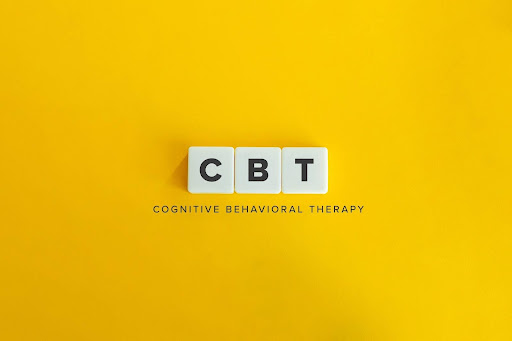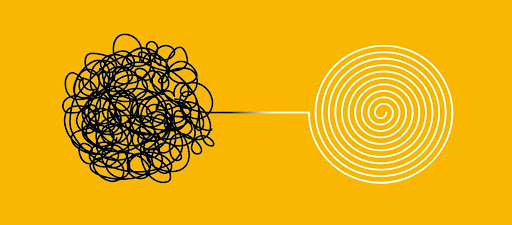I can never get a good review. They hate me. Or: I can’t do anything right. This is the worst.
With enough thoughts like these, it’s inevitable that you might settle on the conclusion that you’re just not good at your job. And if that thought is true, you may just choose to stop trying.
It may seem like that’s a leap to make, but with enough repeated experiences and negative reactions, thoughts like these can soon become automatic. And those unhelpful thoughts can start to shape the way you see yourself and how you respond to the people and situations around you. You may already be asking yourself things like: “Why did I react that way?” or “Why am I so depressed all the time?”
The unhelpful thoughts you’re experiencing are called Cognitive Distortions.
The American Psychological Association (APA) defines cognitive distortions as a type of faulty or inaccurate thinking, perception, or belief. Often these thoughts are a response to stressful or negative life events. People who struggle with issues surrounding anxiety, depression, and trauma are more likely to experience distorted thinking than others.
It’s human nature to have the occasional negative thought about yourself or others– but too many of those thoughts can have harmful effects on the way you think.
A Cognitive Behavioral Therapy (CBT) approach draws the link between our thoughts, feelings, and our behaviors. The way we think has a real impact on our feelings, which then influences our behaviors and the choices we make.
Just like how throwing the switch changes the train tracks, incorporating unhelpful thinking into our thought process changes the outcome of our feelings and behaviors.
It’s very possible to unlearn the unhelpful thinking you have been using. It might not be easy at first, but learning and being aware of these thought patterns can help you maintain realistic perspectives, lessen feelings of anxiety, build your self-esteem, and feel better about the choices you make.

how to challenge cognitive distortion through CBT
Here are a few commonly identified Cognitive Distortions:
Overgeneralization
This type of cognitive distortion applies broad conclusions based on a single negative event or experience.
Let’s say you are walking out of a job interview where you felt awkward and tongue-tied. If you were to overgeneralize, you would look at this one interview and think, “I am such an awkward person all the time!”
This thought may discourage you from interviewing again, or make you feel anxious when socializing or trying to make new friends. Using words like “always” and “never” when thinking of yourself can amplify this distortion. If you take a step back and look at the rest of your experiences, you may realize that you have had a few good interviews in the past, and that your initial cognitive distortion is untrue.
Emotional Reasoning
This cognitive distortion assumes that how you feel reflects what is true. You feel that something is good, or bad, or true, so you believe it really is. Say, for example, you get into a disagreement with your partner which leaves you feeling upset. Using emotional reasoning, you begin characterizing your relationship as negative, because you’re feeling negative about your partner in the moment.
If you look at the evidence in the past, you may see that you actually share many happy experiences with your partner, and that your relationship is mostly positive.
Taking emotional reasoning as evidence of the truth can contribute to problems in the future, like feelings of anxiety and depression.
Jumping to Conclusions
This type of cognitive distortion, also sometimes called Predictive Thinking, happens when you overestimate a negative reaction to something in the future. Let’s say you have a formal team meet-and-greet scheduled for the next day at work. The night before, you jump to conclusions and imagine the many different ways you could make a bad impression on your new team members. You can’t sleep all night because you begin to believe that your co-workers won’t like you, even though you haven’t met them yet.
Those who experience this distortion usually try to avoid the predicted negative situation– this makes it harder to overcome the source of anxiety.
It sounds counter-intuitive, but the best way to combat anxiety is to meet its challenge.
If you make it to the meet-and-greet, you may find that your worst fears did not, in fact, come true, and that your imagination was harder on you than your new co-workers.
Personalization/Blaming
This thought distortion involves the belief that you are responsible for others’ negative behaviors or situations. You discount the external forces that may have influenced someone else’s choices or actions and you place the blame on yourself.
You meet up with your mom for lunch. While there, she spills her drink on her shirt and spends the rest of the lunch in a bad mood. When you get home, you personalize and blame yourself on how the lunch went and send your mom an apology text for the “bad time”, and go through the remainder of your day feeling guilty and anxious. Though it wasn’t your fault, your distorted thinking holds you responsible for your mother’s mood.
Being responsible for something you have little to no control over is distressing and overwhelming.
How to challenge cognitive distortions:
Identify your thoughts
Becoming aware of the way you think is the first step to acknowledging that your thoughts have power. Identify the cognitive distortion you are experiencing. Notice in the moment how you are feeling when you identify that thought. This will help you draw the link between your thoughts and your emotions.
Reframe the situation and Find the Evidence
When assessing a situation or event, try to imagine all of its different perspectives. What are all the sides that you see? What could be something that you haven’t seen?Try finding the evidence that supports what you’re thinking, and find the evidence that disputes your position.
You want to expand your vision to see the alternatives. This will help you to reframe your thoughts in a more centered and realistic way, and see which conclusion your evidence supports.
Perform a Cost-Benefit Analysis
When analyzing a cognitive distortion, ask yourself if it has helped you in the past.
Does this distortion give you a sense of preparedness or control over the future, or has it raised your anxiety and limited new experiences?
Determining how a cognitive distortion has cost you versus how it has benefited you can help motivate you in changing these thought processes.
Forget the Labels and State the Facts
Labeling yourself as something instead of the behavior you are choosing can contribute to negative self-thoughts. You, as a person, are more than your behaviors. Instead, state the facts.
If you didn’t get the dishes done today, avoid labeling yourself as “lazy”. Instead, state the fact, “I didn’t feel like doing the dishes today”. This factual statement opens up the possibility of feeling like you can do the dishes tomorrow, whereas a label of “lazy” ensures that you will not.
Highlight the Positives
This may be hard when you are used to cognitive distortions, but this can eventually help retrain your automatic thoughts to be more positive. When experiencing a negative situation, try to find three positive aspects in it.
For example, you are disappointed that your friend cancels your plans last-minute. You challenge yourself to highlight three positives: you don’t have to get stuck in traffic, you get to catch up on a TV show, and you have more time to play with your dog.

Using one or a combination of many of these techniques is called Cognitive Restructuring, and it’s exactly what it sounds like: structuring the automatic thought processes to be more positive. In addition to using the techniques above, it can be helpful to use worksheets and other CBT tools to practice analyzing your thought process. This website is a great resource for practice worksheets, articles, and videos about CBT.
It may take some practice, but if you use the techniques above, you will be able to identify and challenge those negative thoughts more and more often, leaving you a happier and healthier you.
Serena Johnson is a CBT and Anxiety therapist at Fava Counseling Associates. If you or someone you know struggles with anxiety, and would like help managing it, schedule a free consultation call here.


